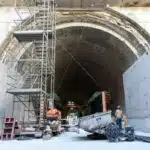As a framing materials estimator, it is essential to have a precise and clear understanding of the materials required for any given project. Estimating framing materials can be a difficult task, particularly when dealing with complex structures or unique designs. However, by following a few simple steps and utilizing proven techniques, you can improve your accuracy and ensure that your clients receive the best possible service.
One of the most important aspects of estimating framing materials is having a thorough knowledge of the building codes and regulations in your area. This will enable you to accurately calculate the amount of lumber required for walls, roofs, and floors while ensuring that all relevant safety standards are met. Additionally, understanding industry-specific terminology and measurements is crucial for accurate estimation. With this knowledge at your fingertips, you can provide exceptional service to your clients by delivering precise estimates that meet their expectations. In this article, we will explore several key strategies for estimating framing materials to help you become more proficient in your role as an estimator.
Understanding Building Codes And Regulations
As a framing materials estimator, it is important to have a solid understanding of building codes and regulations. These rules are put in place to ensure the safety and structural integrity of buildings. Failure to comply with permit requirements and navigate zoning restrictions can result in costly fines, legal action, and even the demolition of a building.
Building codes vary by jurisdiction, so it is vital for a framing materials estimator to familiarize themselves with the specific regulations in their area. This includes understanding the minimum standards for things like ceiling height, stair width, and fire safety measures. Additionally, there may be restrictions on the size or location of a structure based on factors like zoning laws or environmental concerns.
By having a thorough understanding of building codes and regulations, a framing materials estimator can provide accurate estimates that meet legal requirements. It is crucial to stay up-to-date on any changes or updates to these rules to ensure compliance on every project. Next, we will discuss how familiarizing yourself with industry terminology and measurements can further enhance your estimating skills.
Familiarizing Yourself With Industry Terminology And Measurements
Understanding building codes and regulations is crucial in the construction industry. It sets standards for safety, health, and welfare of individuals in the built environment. As a framing materials estimator, it’s essential to have a clear understanding of these codes and regulations to ensure that the project meets requirements.
Familiarizing yourself with industry terminology and measurements is also vital as a framing materials estimator. You will come across various terms such as “stud,” “joist,” “header,” among others commonly used in the industry. Knowing what these terms mean will help you communicate effectively with contractors, suppliers, and other stakeholders involved in the project. Common measurements used in framing include inches, feet, yards, and meters.
Industry jargon can be complicated and intimidating for those who are new in the field. However, as an estimator, you must master this language to execute your job efficiently. By doing so, you’ll gain credibility among stakeholders involved in the project since they’ll trust your expertise. Estimators who use industry jargon correctly can accurately estimate material quantities required for a project. Accurate estimates reduce wastage of materials while keeping costs at a minimum.
Assessing project scope and design is an integral part of estimating framing materials’ costs accurately. Understanding building codes and regulations along with familiarizing yourself with industry terminology helps you assess the project’s scope more accurately. Once you have assessed the project’s scope and design, you can break down each component’s cost into smaller units for easier estimation. By doing so, you’ll be able to provide accurate estimates that align with clients’ budgets without compromising on quality or safety measures required by building codes and regulations.
Assessing Project Scope And Design
As a framing materials estimator, it is my responsibility to assess project scope and design before estimating the required materials. The first step in this process is to understand the client’s preferences for the project. This includes factors such as the desired construction style, building layout, and intended use of the structure. By taking these design considerations into account, I can determine the appropriate materials needed to achieve the client’s vision while staying within budget constraints.
Once I have a thorough understanding of client preferences, I move onto assessing project scope. This involves reviewing plans and specifications to determine the size and complexity of the structure. Factors such as wall height, roof pitch, number of stories, and openings for doors and windows all impact the amount and type of framing materials required. In addition, site conditions such as soil type, wind loads, and seismic activity must also be considered when determining appropriate framing materials.
By thoroughly assessing project scope and design considerations, I can accurately estimate framing material quantities needed for construction. This ensures that builders have access to all necessary materials without overspending on unnecessary items or experiencing delays due to insufficient resources. The next step in this process involves determining lumber quantity for walls by analyzing specific aspects of project scope in further detail.
Transition: To accomplish this task effectively, it is important to consider factors such as wall height, spacing between studs, header sizes above doorways or windows, insulation requirements, blocking requirements around doorways or windows openings which will all be discussed in detail in subsequent sections.
Determining Lumber Quantity For Walls
To determine the lumber quantity for walls, it is essential to optimize efficiency and minimize waste. Proper planning is necessary to achieve this goal by accurately measuring the dimensions of the room and identifying any obstructions like windows or doors that may affect the amount of lumber required. Once measurements are taken, a blueprint can be created, which will help estimate how much lumber is needed.
The next step in determining the lumber quantity for walls involves calculating the stud spacing. This refers to the distance between each vertical piece of wood that will support the wall covering material. The most common spacing is 16 inches on center, meaning that studs will be placed every 16 inches along the length of the wall. The number of studs needed can then be calculated by dividing the length of the wall by 16 inches.
Optimizing efficiency and minimizing waste are essential when determining lumber requirements for walls. It is crucial to be precise in measuring dimensions, calculating stud spacing, and accounting for obstructions to ensure accurate estimates. By implementing these steps, it’s possible to reduce waste while still ensuring that there are enough materials available to complete a project successfully. The following section will detail how to calculate lumber requirements for roofs using similar principles.
Calculating Lumber Requirements For Roofs
Having determined the lumber quantity for walls, it is essential to move on to estimating framing materials for roofs. One interesting statistic to note is that according to a recent study, the average roof pitch in the United States is 4/12. This means that for every foot of horizontal distance, the roof rises four inches vertically.
When estimating framing materials for a roof, it’s crucial to consider the structural load requirements. The weight of roofing materials and snow can put significant stress on a building’s framework and foundation. Therefore, it’s necessary to ensure that the framing materials can withstand this load and prevent any possible damage or collapse.
To determine how much lumber is needed for a roof, one must start by calculating the square footage of the roof surface area. From there, using information about local codes and regulations regarding structural loads and spans; one can determine what size of lumber will be required for supporting members such as rafters or trusses. Additionally, other factors like spacing between supports and bracing will also need consideration before arriving at an accurate estimate.
Moving forward towards estimating lumber needs for floors, it is important to keep in mind various factors such as floor joist span limits, live loads, dead loads, and deflection criteria. By understanding these variables and applying them accurately while estimating material quantities; one can ensure that the structure being built is safe and stable while also minimizing waste during construction.
Estimating Lumber Needs For Floors
As a framing materials estimator, accurately estimating the lumber needs for floors is essential to ensure that you are able to complete the project while staying within budget constraints. One of the key factors in estimating the lumber needs for floors is understanding the different types of flooring materials that will be used. This knowledge will allow you to determine how much lumber will be needed for each type of flooring and allocate resources accordingly.
When considering flooring types, it’s important to factor in their thickness and width, as this can impact how much lumber is required. For example, hardwood flooring typically requires more lumber due to its thickness and width compared to laminate or vinyl flooring. By taking these factors into account, you can create a more accurate estimate and prevent wastage of materials.
Budget constraints are another important consideration when estimating lumber needs for floors. In order to stay within budget, it’s important to carefully consider each aspect of the project and determine where cuts can be made without compromising quality. Accurate estimation can help ensure that any potential cost overruns are identified early on, allowing for adjustments to be made before it’s too late.
When factoring in windows and doors, precise measurements must be taken into consideration as they have an impact on the amount of framing material you need. Windows and doors tend to require additional framing support around them which increases overall material requirements. By keeping these specific requirements in mind, you’ll be able to develop a comprehensive estimate that accurately reflects all aspects of your project plan.
Factoring In Windows And Doors
When estimating framing materials, it is important to factor in the presence of windows and doors. This is because these structures can significantly impact the amount of lumber required for a project, as well as the installation process itself. It is crucial to take accurate measurements of all windows and doors before beginning any calculations.
Measuring techniques are an essential component of factoring in windows and doors. In order to get precise dimensions, estimators should use a tape measure or laser level to obtain measurements that are as exact as possible. Additionally, it may be necessary to account for any irregularities or asymmetrical features when measuring windows and doors.
Installation challenges can also come into play when accounting for windows and doors during framing material estimation. Depending on the placement and size of these structures, additional framing may be needed to support their weight or prevent sagging over time. Estimators must consider these factors when determining the amount of lumber required for a project.
- Bullet Point List:
- Accurate measurements are essential for factoring in windows and doors
- Measuring techniques such as tape measures or laser levels should be used
- Irregularities or asymmetrical features must also be accounted for
- Installation challenges such as additional framing may be necessary
- Proper planning can help avoid costly mistakes
In conclusion, estimating framing materials requires careful consideration of all features present in a building project. Windows and doors are no exception; their inclusion can greatly impact the amount of lumber needed, installation challenges faced, and overall cost of the project. By utilizing accurate measuring techniques and taking into account any special requirements related to these structures, estimators can better plan for successful completion of their projects while avoiding costly mistakes.
Transition: Another aspect that needs attention when estimating framing materials is accounting for special features and customizations present in a building project.
Accounting For Special Features And Customizations
When estimating framing materials, it’s essential to account for any special features or customizations that the project may require. These can include items such as curved walls, unique angles, or built-in shelving units. Customization considerations should be made early in the planning process to ensure that all necessary materials are accounted for and included in the estimate.
One way to plan for special features is to create a detailed blueprint of the project. This will allow the estimator to identify any potential issues that may arise during construction and determine the appropriate materials needed to complete these features. Another consideration is whether or not the customization will require specialized tools or techniques, which can impact both material quantities and labor costs.
When estimating for special features and customizations, it’s important to remember that these additions can increase material waste and overages. It’s crucial to plan for extra materials in case of mistakes or unforeseen circumstances during construction. Additionally, some special features may require more complex cuts or additional trimming of materials, which can also lead to increased waste. By accounting for these factors in advance, estimators can ensure that their estimates are accurate and comprehensive.
With proper planning and attention to detail, accounting for special features and customizations can be an effective way to ensure that framing projects meet both design specifications and budgetary constraints. In addition to considering customization needs, estimators must also take into account waste and overages when preparing their material estimates. By incorporating these factors into their calculations, they can provide clients with reliable cost estimates that accurately reflect the scope of work required for each project.
Considering Waste And Overages
A wise estimator always anticipates the unexpected. Therefore, when estimating framing materials, it is crucial to consider waste and overages. Calculating waste percentage involves determining how much material will be lost or damaged during the project. This is particularly important for wood products as they are susceptible to warping, splitting, and cracking.
Accounting for unexpected changes in the project is also essential. For instance, a change in design may require additional framing materials. In such cases, having an allowance for overages will ensure that there are enough materials to complete the job without having to make additional purchases mid-project. This not only saves time but also reduces costs associated with purchasing new materials.
Here are five things to keep in mind when estimating waste and overages:
- Consider the type of material being used as some have higher waste percentages than others.
- The complexity of the project may increase the likelihood of waste and overages.
- Weather conditions can impact material quality and lead to increased waste.
- Evaluate the experience of your team as inexperienced workers may generate more scrap.
- Assess potential risks that could require additional materials such as unforeseen damage or soil erosion near foundation walls.
With these considerations in mind, you can confidently estimate framing materials that take into account possible waste and overages. This ensures that you have enough resources on hand to complete the job while avoiding unnecessary expenses mid-project. In evaluating material costs, we will delve further into how you can get accurate pricing information for each element required in your build.
Evaluating Material Costs
Budget management is a critical aspect of framing material estimation. As an estimator, it is essential to keep in mind the budget constraints provided by the client while evaluating material costs. By doing so, we can ensure that we select the most cost-effective options for our clients while also providing high-quality materials. This requires careful consideration of various factors such as the type and grade of lumber required, hardware and fasteners, and any other additional materials needed.
Material quality assessment is another important factor when estimating framing materials. It is crucial to evaluate the quality of the materials to ensure that they meet industry standards and are durable enough to withstand various weather conditions. Conducting a thorough quality assessment will allow us to determine whether or not certain materials are worth their cost and provide value for money. Additionally, selecting high-quality materials will ensure that the framing structure remains strong and stable over an extended period.
In conclusion, as a framing material estimator, managing budgets and assessing material quality are essential aspects of estimating framing materials accurately. By keeping these factors in mind, we can provide our clients with cost-effective yet high-quality materials that meet their requirements. The next step in this process involves comparing prices from different suppliers to obtain the best deals possible without compromising on quality.
Comparing Prices From Different Suppliers
Evaluating material costs is just the first step in estimating framing materials. Just like a carpenter who needs to measure twice and cut once, an estimator needs to be meticulous and detail-oriented when analyzing the quality of materials. Comparing quality is essential because it ensures that the project will meet or exceed the client’s expectations. A wise estimator will always consider the durability, strength, and sustainability of each item used in building a structure.
Negotiating prices is another critical skill that every estimator should master. A good negotiator can save money for the company without compromising on quality. It takes experience and knowledge to determine fair prices from different suppliers. There are times when a particular supplier may offer lower-priced items but with lesser quality. It is up to the estimator to decide whether it’s worth buying from them or not.
Incorporating labor and installation costs into the estimate is equally important as evaluating material costs and negotiating prices. An experienced estimator knows how much time it takes to complete a project, including setting up equipment, scaffolding, and cleanup after construction. They also understand that labor costs vary depending on location, union requirements, and experience level of workers. Hence, incorporating these factors in an estimate provides a more accurate projection of total project expenses.
Incorporating Labor And Installation Costs
When estimating framing materials, it is important to consider the labor and installation costs involved. Labor costs refer to the amount paid for the work that requires skilled professionals such as carpenters, electricians, or plumbers. Hourly rates for these professionals vary depending on their expertise and location. Subcontractor fees must also be included in the estimate if any part of the job is outsourced to another company.
Installation costs include expenses incurred during the installation process. These may include equipment rental fees for machines used in cutting or assembling materials. Permit fees charged by local authorities must also be factored into the estimate if required by law. Missing these costs can lead to underestimates and subsequent issues that can affect customer satisfaction.
It is essential for framers to have a clear understanding of all potential costs when estimating framing materials. By incorporating labor and installation expenses into calculations, framers can create more accurate estimates that allow them to provide better service while avoiding costly surprises later on.
Next, we will discuss adjusting for seasonal fluctuations in material prices to ensure that accurate estimates are still provided even in times of uncertainty.
Adjusting For Seasonal Fluctuations
As a framing materials estimator, it is essential to take into account the seasonal fluctuations that can impact the cost of materials. One factor to consider is the weather patterns during specific seasons. For instance, winter months often cause delays in construction projects due to harsh weather conditions, which can increase labor costs and decrease productivity. This can lead to an increase in demand for framing materials, which results in higher prices.
Another seasonal fluctuation that estimators should monitor is pricing trends. Suppliers may adjust their prices based on market demand and availability of raw materials. For example, if there is a shortage of lumber due to wildfires or other natural disasters, the price of framing materials may rise significantly. It is crucial for estimators to stay informed about these changes and adjust their estimates accordingly.
To ensure accurate estimates, reviewing and revising them regularly is necessary. Estimators should keep track of any changes in material costs and adjust their estimates as needed. Additionally, they should consult with industry experts or experienced colleagues to get insights into potential challenges or opportunities that may affect material costs. By doing so, estimators can provide clients with reliable estimates that factor in seasonal fluctuations and help them make informed decisions about their construction projects.
Reviewing And Revising Estimates
Revising estimates is a crucial step in the framing materials estimation process. It involves reviewing the initial estimation and making necessary adjustments to ensure that the final estimate is as accurate as possible. Revising estimates helps to prevent cost overruns, which can be detrimental to budget management.
Budget management is an essential aspect of construction projects, and it requires careful planning and execution. The initial estimate provides a baseline for budget management, but it is not set in stone. Revising estimates enables framers to adjust their budget as needed, ensuring that they stay within their financial constraints while still maintaining quality standards.
To effectively revise estimates, it is crucial to have a clear understanding of the project’s scope and requirements. This entails communicating effectively with clients and contractors to gather all relevant information and make informed decisions based on that information. Effective communication also ensures that everyone involved in the project is on the same page, which can help prevent misunderstandings and mistakes down the line.
Communicating Effectively With Clients And Contractors
In the estimation of framing materials, it is important to improve communication with clients and contractors. This requires a clear understanding of their expectations and requirements, as well as the ability to effectively communicate project timelines and budgets. By managing expectations from the outset, misunderstandings can be avoided and relationships can be built on trust and transparency.
One effective way to improve communication is by establishing regular meetings or check-ins with clients and contractors. This allows for open dialogue and provides an opportunity to address any concerns or questions that may arise throughout the project. Additionally, it is important to establish a clear chain of command for decision-making and problem-solving, ensuring that all parties involved are aware of their roles and responsibilities.
Managing expectations also involves being transparent about any potential delays or issues that may arise during the project. This includes communicating any changes in scope or budget in a timely manner, so that clients and contractors are not caught off guard. By maintaining clear lines of communication throughout the project, framing materials estimators can build strong relationships with clients and contractors, leading to successful outcomes for all parties involved.
Conclusion
As a framing materials estimator, it is vital to understand the building codes and regulations that govern construction projects to provide accurate estimates. Familiarity with industry terminology and measurements is also crucial in determining the appropriate quantity of framing materials needed for walls and roofs. The project’s scope and design should be assessed to identify any special requirements that may affect the framing materials’ estimate.
To calculate lumber requirements for walls, it is essential to consider the wall’s height, length, and thickness. For roofs, factors such as pitch, span, and overhangs must be taken into account. Incorporating labor and installation costs is another critical aspect of estimating framing materials accurately.
Adjusting for seasonal fluctuations, such as price increases due to high demand or supply shortages during certain times of the year, can also affect cost estimates. Reviewing and revising estimates regularly ensures accuracy throughout the project.
Communication with clients and contractors is key in ensuring everyone involved understands the scope of the project and estimated costs. As a framing materials estimator, attention to detail is paramount in providing accurate estimates that meet your client’s needs while staying within budget constraints.
In conclusion, estimating framing materials requires careful planning, attention to detail, knowledge of industry standards, and effective communication skills. As an estimator, you play a critical role in ensuring that construction projects are completed efficiently while meeting all regulatory requirements. With these skills at hand, you can deliver reliable estimates that align with your client’s expectations while painting a vivid picture of what their dream home will look like – one beam at a time!
Image Credits
- “comparing a wooden frame with other materials” by nicolas.boullosa (featured)







![Calculating How Much Stone Dust You Need 7 [Blog Post]Stone Dust © Oxfam Australia](https://green-life.blog/wp-content/uploads/2023/05/GdZVzgTqPhjq-150x150.jpg.webp)





















